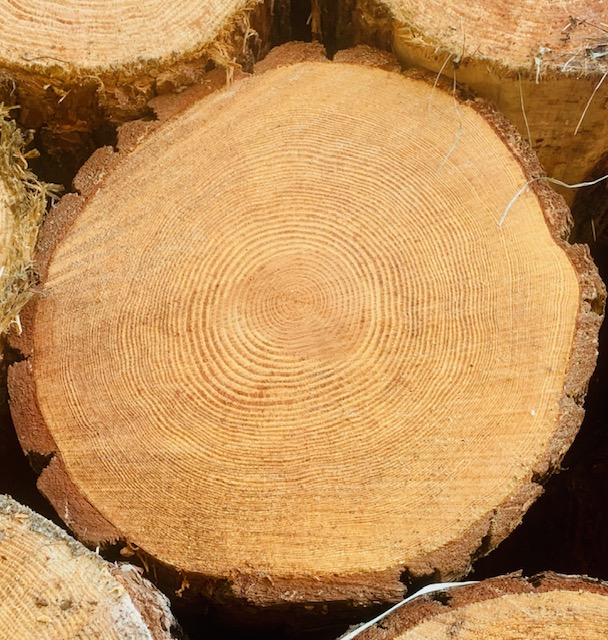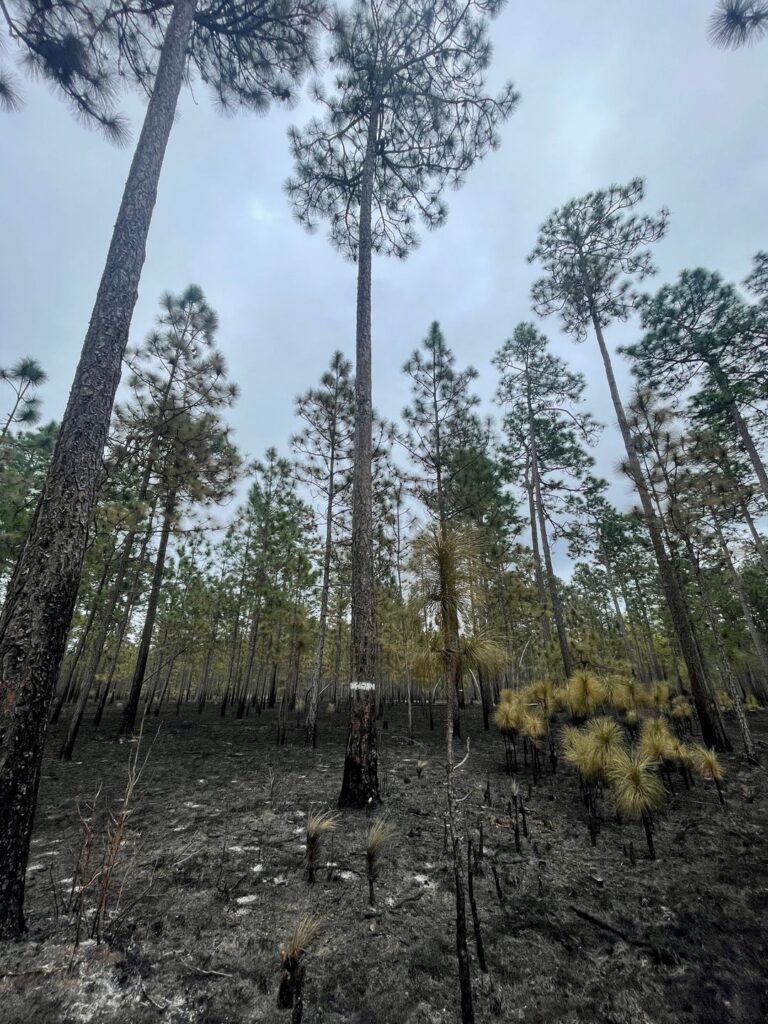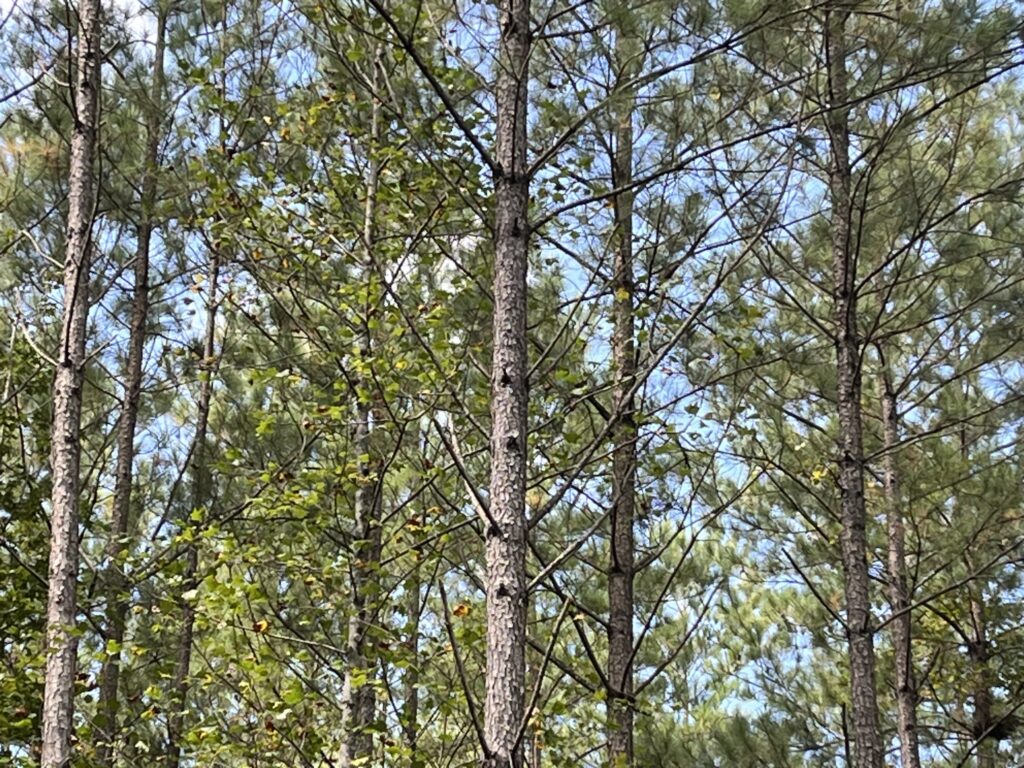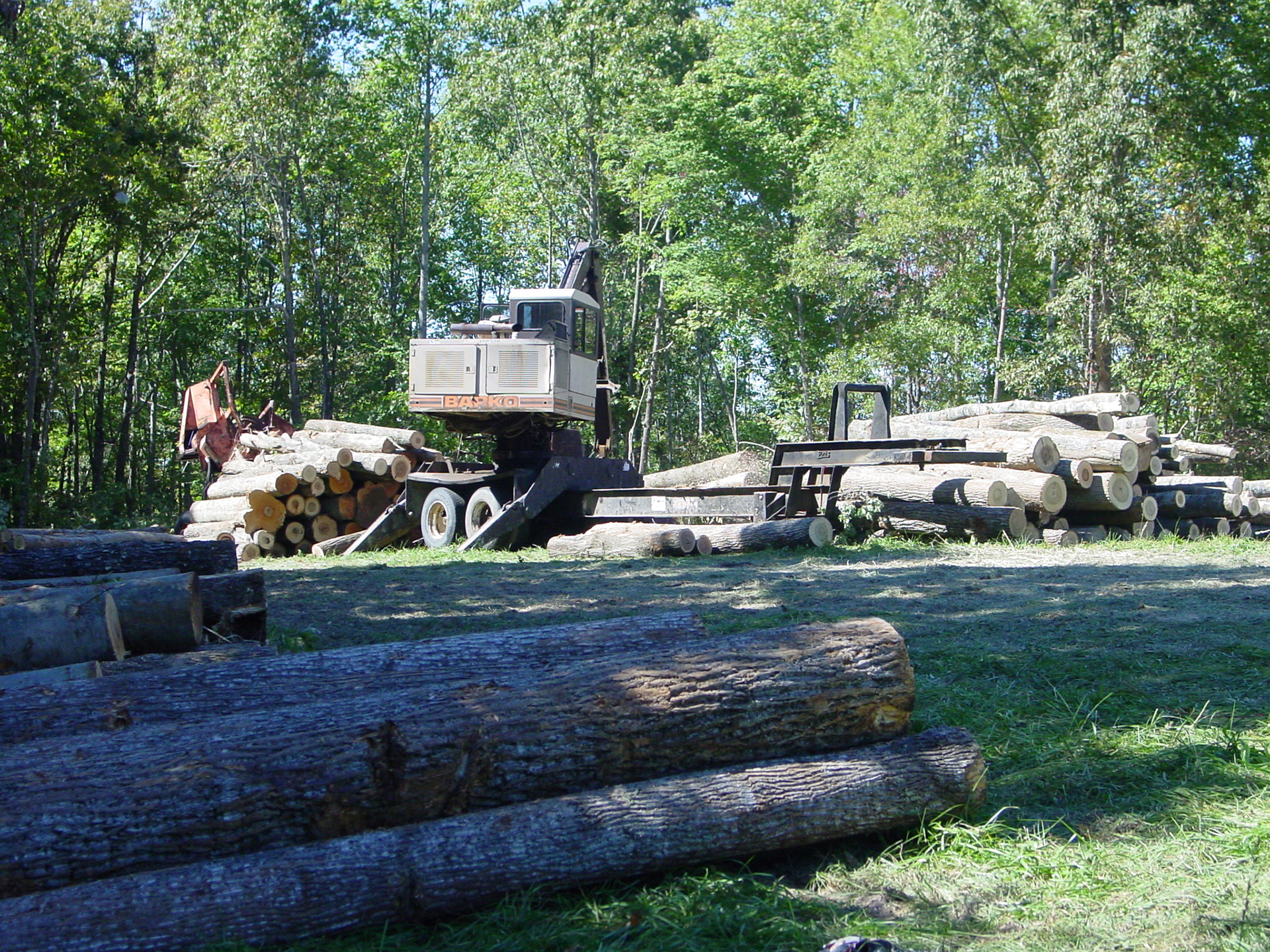Timber harvesting, when conducted with care and planning, allows landowners to manage forests to meet multiple objectives. Landowners may conduct timber sales—including selling timber for income—for various reasons, whether these activities are outlined in a management plan or prompted by unexpected events like insect or disease outbreaks, which may necessitate a harvest to salvage dying trees and protect the forest. Regardless of the reason, a successful timber harvest and sale begins with a forest resource professional developing a comprehensive plan that aligns with the landowner’s goals.
Benefits of Selling Timber
Selling timber can offer landowners a valuable source of income. Depending on the quality and quantity of timber, significant revenue can be earned. Additionally, harvesting timber can improve the health of a forest by thinning weaker or diseased trees, allowing healthier ones to thrive. This can reduce the risk of forest fires and the spread of disease.
Moreover, landowners may benefit from tax incentives, such as reduced property taxes or credits for conservation efforts, which help reduce the overall tax burden. In some cases, selling timber can increase the property’s value, especially if the landowner plans to sell the property in the future.
Evaluating Your Timber: Understanding Its Value
One area where landowners often make mistakes is in evaluating the value of their timber. Unless a landowner is a trained professional, accurately assessing timber’s worth is challenging. Engaging a professional forester and using precise measurement techniques are essential for ensuring a correct appraisal.
Timber prices vary by region, state, and even within counties. Local mill presence and demand, influenced by broader economic activities, also play a role in pricing. The type and quality of timber are crucial in determining its market value. Different products—such as pulpwood, sawlogs, veneer logs, or poles—command different prices. High-quality timber with fewer defects generally fetches higher prices.

Timber sales can generate income for landowners, but due process must be followed carefully.
It is also important to have a sufficient volume of high-quality timber to meet market demand. For example, having a few pole-quality trees may not guarantee pole rates unless there is enough timber to constitute a truckload. Accessibility to timber also impacts the stumpage rate—the price for standing trees—because difficult terrain or poor roads increase harvesting costs. Weather conditions further influence stumpage rates; wet weather, for instance, can limit logging activities, raising prices if your timber can still be logged during such conditions.
Accurately calculating timber value requires understanding market dynamics and physical access. Consulting a professional forester maximizes timber value through strategic planning and negotiation.
Engaging a Consultant Forester
Selling timber can be complex due to fluctuating market conditions, time constraints, and tax implications. The typical process involves multiple steps requiring detailed knowledge of timber markets, appraisals, and legal contracts. Landowners should seek guidance from a registered or consulting forester, who acts on their behalf, much like a realtor in property sales, to ensure a successful transaction.
Understanding the Timber Harvesting Process
When it comes to cutting and removing standing timber, landowners have several options. Clearcutting large areas mimics the effect of a wildfire by creating an open space for sun-loving species, like aspen or pin cherry, to colonize. Alternatively, selective harvesting, where individual trees are removed, maintains forest cover and favors shade-tolerant species like sugar maple or beech.

Selling timber often proves challenging due to changing market conditions, tight time frames, and various tax considerations.
Once a decision to harvest is made, finding a reliable logging contractor is essential. Recommendations from other landowners can be helpful, as many loggers secure jobs through word-of-mouth. Ensure the contractor has the necessary equipment, insurance, and a contract.
Methods of Selling Timber
Timber harvesting is critical to industries like construction, paper, and furniture manufacturing. However, it must be carefully regulated to prevent overexploitation and environmental damage. Federal, state, and local laws govern timber harvesting to ensure sustainability and environmental protection.
Federal Timber Harvesting Laws
Federal laws like the Clean Water Act (CWA) and the Endangered Species Act (ESA) regulate timber harvesting to protect water quality and critical wildlife habitats. Additionally, the National Forest Management Act governs timber production on public lands.
State-Specific Regulations
Each state may have its own regulations that expand upon federal laws. For example, California requires landowners to submit a Timber Harvest Plan (THP) before logging, ensuring operations protect water quality and wildlife habitats. Other states, such as Oregon, enforce stringent logging regulations to maintain forest health and prevent soil erosion.
Sustainable Timber Harvesting Practices
Sustainability is vital in timber harvesting, ensuring forests remain productive for future generations. Sustainable practices, such as selective logging and clear-cutting with replanting, help preserve biodiversity, prevent soil erosion, and maintain ecosystem services like water filtration and carbon sequestration.
Economic Aspects of Timber Harvesting
There are two main methods of selling timber:
- Lump-sum sales: Buyers submit bids for designated timber, and the landowner is typically paid upfront before any timber is removed.
- Pay-as-cut sales: The buyer pays per unit of volume after the timber is cut and delivered. This method requires detailed accounting for each load of logs or pulpwood and often involves greater diligence and trust.
Timber Sale Taxation
Timber sales may have tax implications, as all income from the sale is generally taxable unless excluded by law. Landowners should consult with tax professionals to understand the specific tax considerations related to timber sales.
Post-Harvest Considerations
After harvesting, the site must be stabilized to prevent erosion. Best Management Practices (BMPs), such as seeding roads and trails, are crucial for site productivity and water quality.

Timber sales depend on the kind of wood grown and the demands for the specific wood produced.
Additionally, post-harvest activities, like slash disposal and site preparation, help regenerate the forest. Once these activities are complete, the logger can be released from any further obligations, and any performance bond provided should be returned.
Resources for Landowners
Landowners have several resources available for help with timber sales, including state forestry commissions and organizations like the American Forestry Foundation and the Society of American Foresters.
Conclusion
Selling timber is a complex process requiring careful planning and professional expertise. For most landowners, engaging a consultant forester is the best way to ensure compliance with regulations and maximize the return on their timber investment.


